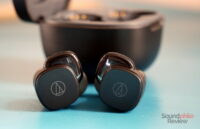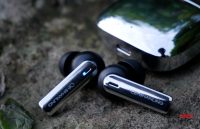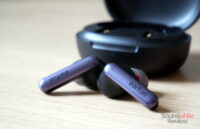Campfire Audio‘s first wireless earbuds are finally here. The new Campfire Audio Orbit are evidently a product of the Oregonian company, with the same design language as the one we’ve seen in their wired products and a tuning that reminds that of the more fun-orientated models. They sit at the very high end of the TWS market, but do they keep up with the expectations that come with that?
Disclaimer: I received a complimentary unit from Campfire Audio’s UK distributor, KS Distribution. The earphones have an MSRP of $249.
TL;DR: recap
| Pros |
Cons |
| + Very comfortable and lightweight
+ Well-built + Great case |
– Too much bass, peaky treble
– Muddy, dark signature overall – No water resistance – Stock tips can be problematic to some – Virtually no passive isolation – Lacklustre, confusing app |
Rating: 5/10
Packaging & Accessories
The packaging is the same we find on all other Campfire Audio’s releases: a brightly coloured cardboard box in an origami-like wrapping. Inside we find the earphones, a set of foam eartips in three sizes, a set of silicone eartips in three sizes, a pin and a USB to USB-C to charge the earbuds.
Design & Comfort
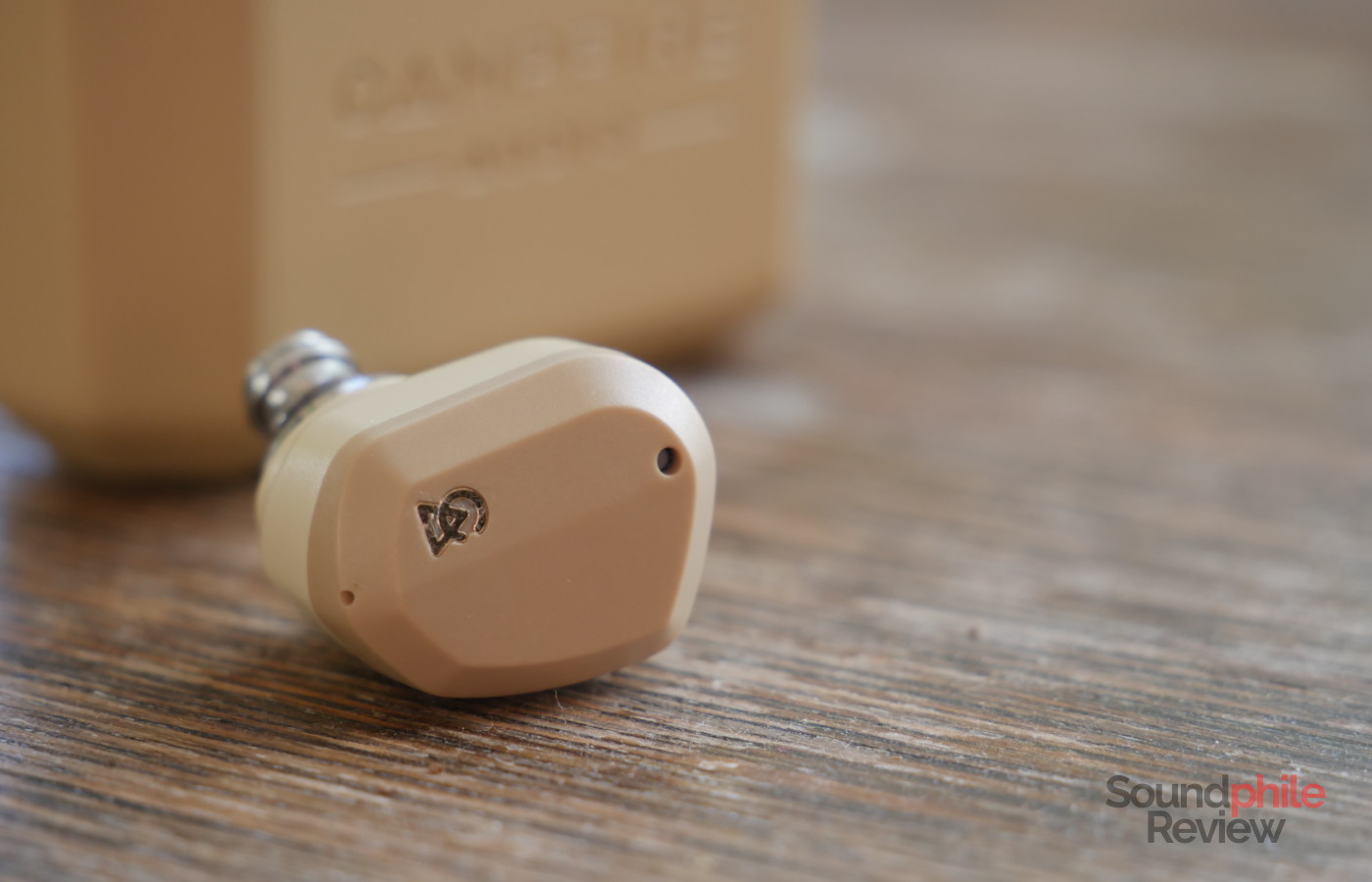
The design of the Campfire Audio Orbit is exactly like that of the wired products, so much so that I thought I would find a physical connector for a cable on the shells (spoiler: there is none). The Orbit use a dual-tone colour scheme with a darker and a lighter beige. This works really well and makes the earbuds surely stand out from the mass of white and black products that crowd the market. The shells are shaped a bit like other Campfire Audio products, such as the Solaris.
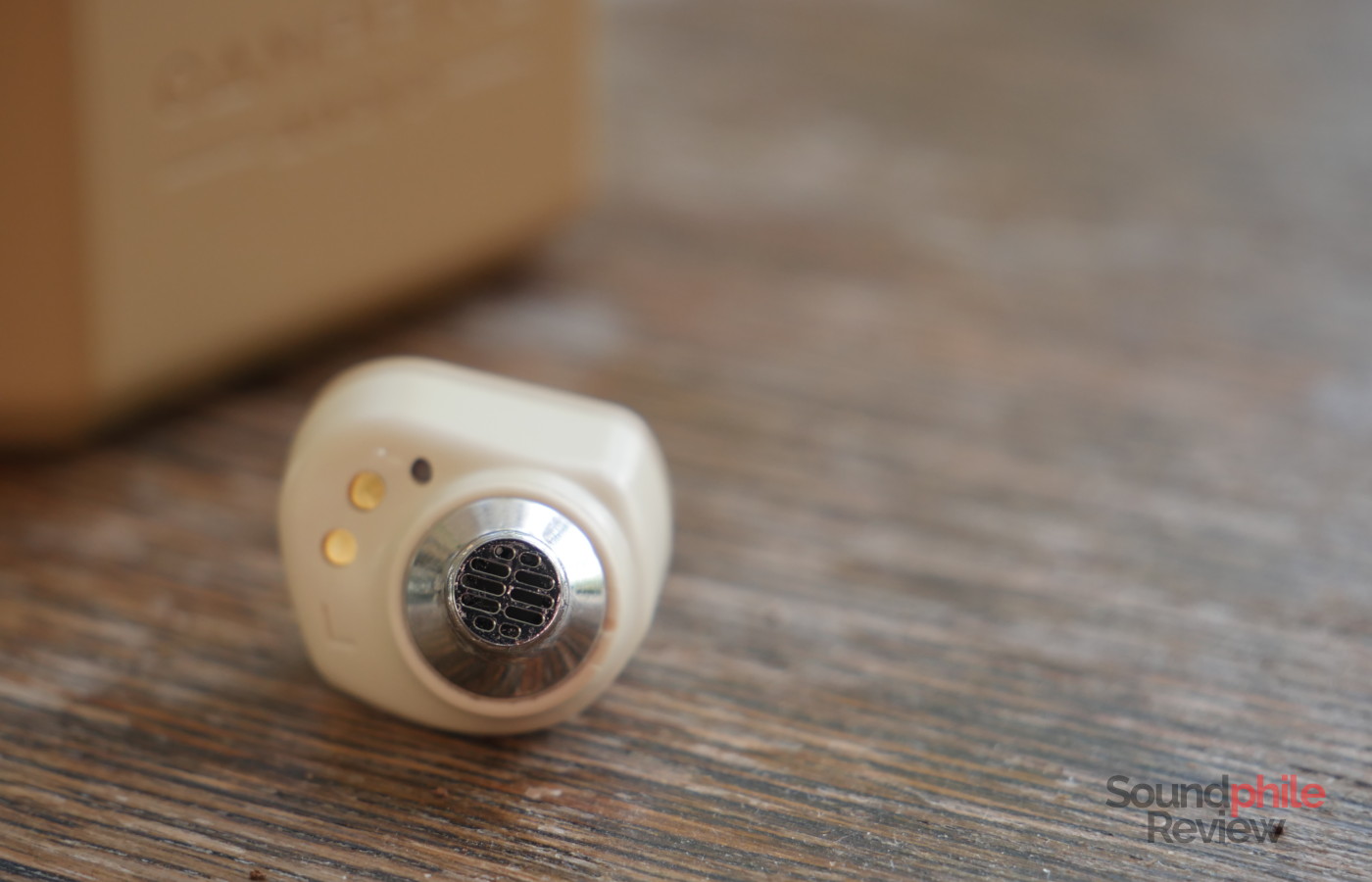
Build quality is, as one can expect from high-end earbuds, excellent. Campfire Audio doesn’t provide any information on IP rating, though, which means the Orbit shouldn’t be used in especially humid/wet conditions (e.g. while working out or under rain) as they could be damaged. This is quite a big omission in my opinion, especially considering the price these are sold at.
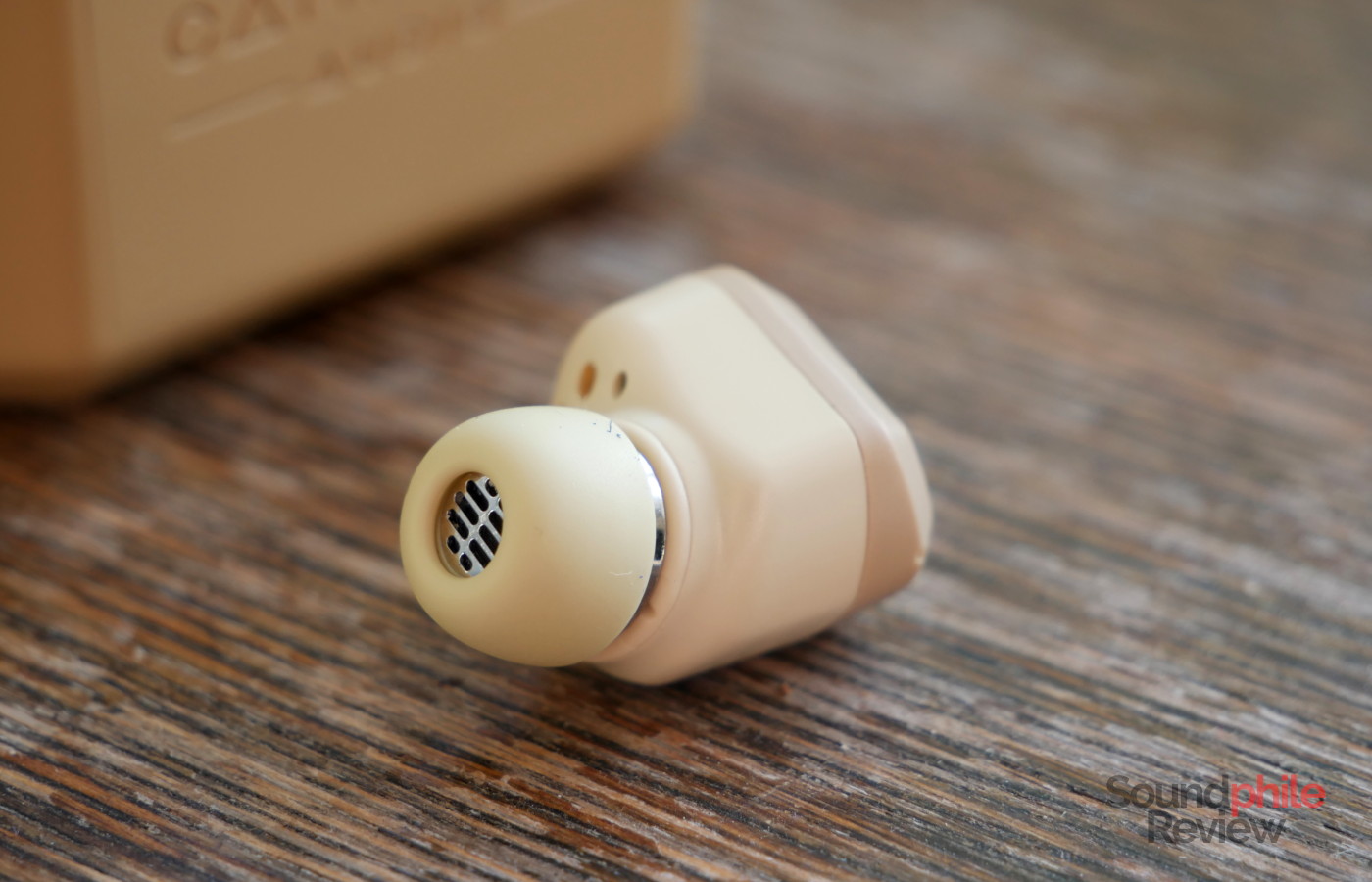
There’s an aspect of the design which I find problematic, at least when it comes to my personal physiognomy and preference. The nozzle is quite short, as it is identical to the one used on the wired products. The thing is that those are meant to be used with normal, (relatively) large tips. The stock eartips that come with the Orbit are quite short and narrow, however, which means they provide a very shallow fit: this makes it impossible, at least in my case, to get a good seal, as well as to make the earbuds stay in place securely. This is true with both the foam and the silicone tips. One thing I appreciate about the case, though, is that it has enough space to accommodate standard-sized eartips, so you can use larger tips if you want to. In fact I’ve used the SpinFit CP100 with no issues at all.
Other than that, I find the Orbit quite comfortable to use, thanks to the small size and to the absence of strong edges. The smooth shells really help with this.
Passive isolation isn’t quite as good as it could be, independently of the eartips you choose. In fact I would describe it as “lacking”, considering I can hear my keyboard pretty well as I type this.
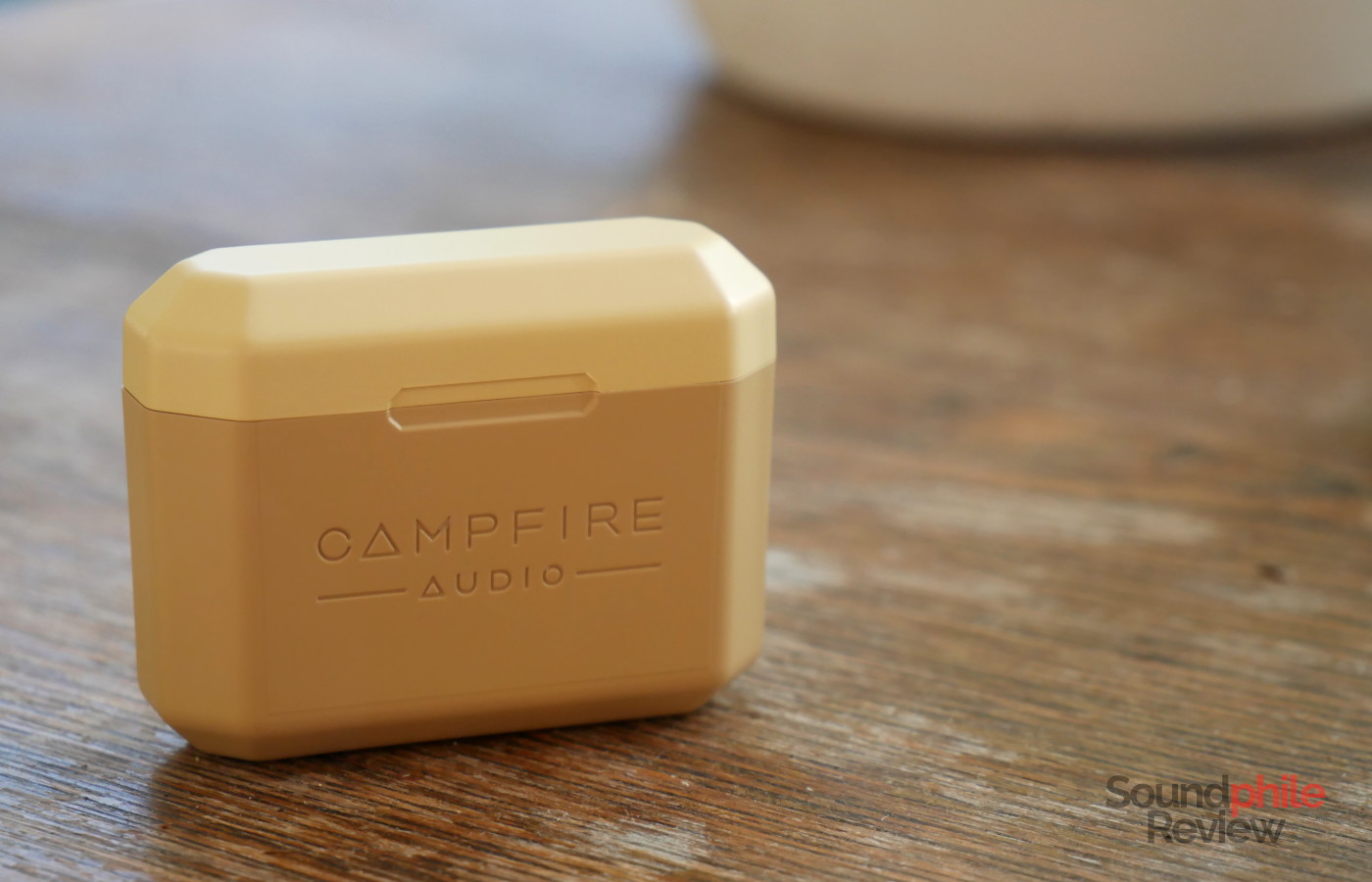
The case is small and lightweight, with the lid that opens and actually stays open. It has a USB-C port on the bottom, as well as four status LEDs and a button (to initiate pairing) inside. Its only flaw is the fact that the base is quite narrow, so it tends to capsize.
Extra Features & Battery Life
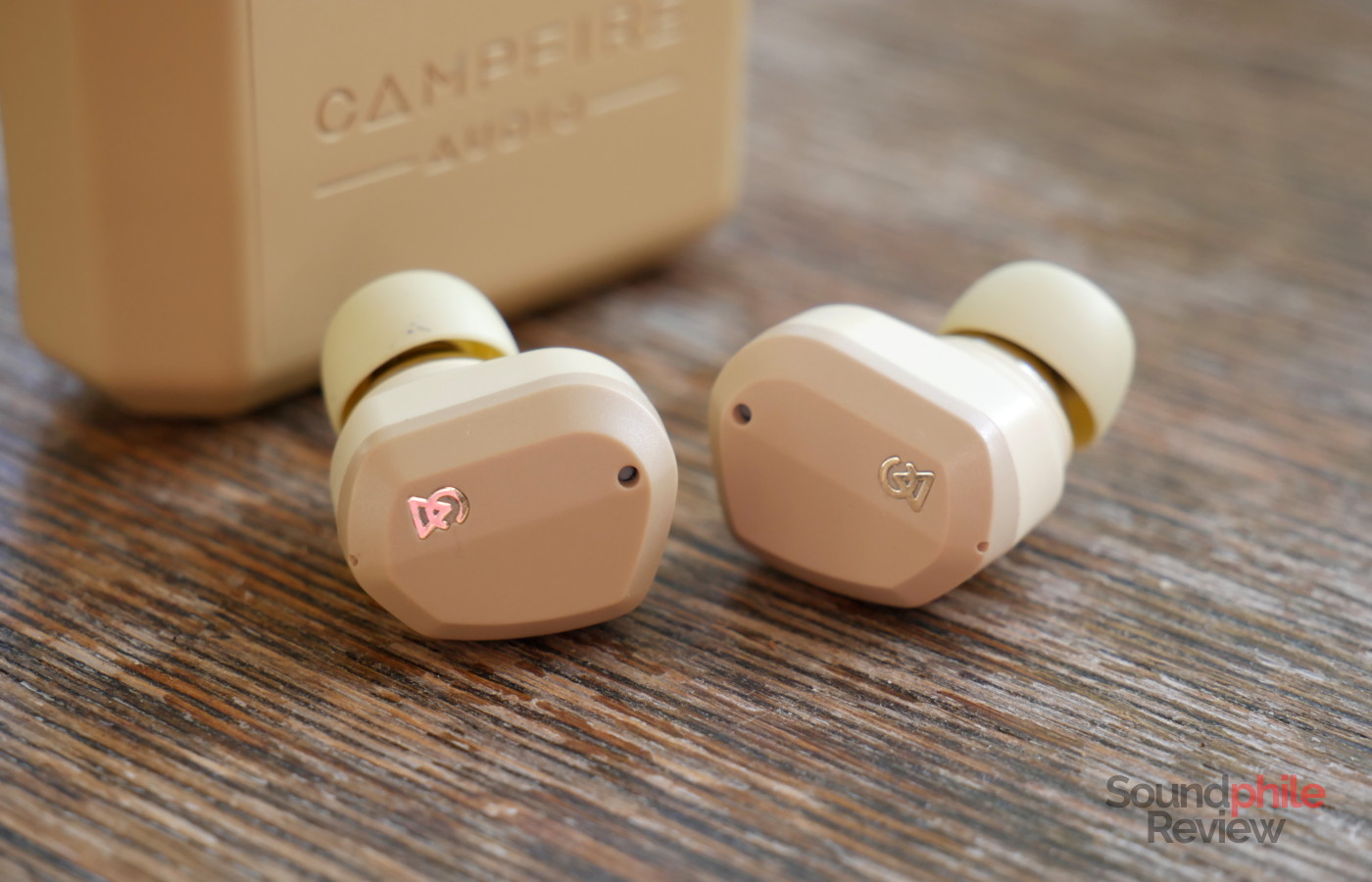
The Campfire Audio Orbit feature compatibility with the Bluetooth 5.2 standard as well as with the SBC, AAC and aptX Adaptive codecs. The range is not the best I’ve seen, as the music starts to stutter a bit when I walk out of my studio where the computer is, but the stability is great if the signal is strong enough.
Volume is a big problem to me. It is simply way too high and there is no way to reduce it when using a mobile phone or DAP. On my PC I can lower individual apps’ volumes, so I can work around this limitation, but with phones and DAPs this possibility is simply not there, which means it is impossible to get a volume which I find acceptable.
Controls are intuitive and complete. One tap on either earbud plays or pause playback, two taps skip to the previous (left) or next (right) track, three taps invoke the voice assistant and a longer tap reduces (left) or increases (right) the volume.

Battery life is very good, sitting at around 8 hours per charge, with additional ~3.5 charges in the case. In this respect, the Orbit really don’t let you down as they last through a whole working day without issues.
Software
The Campfire Audio Orbit comes with a dedicated application for both Android and iOS. It is very basic and is only useful to check the battery status as well as enable or disable controls and set the equalisation. There is currently no way to remap controls, only to enable or disable them. There is also a page dedicated to firmware update. For reasons unknown, you need to actually be reproducing music to set the equalisation profile; if you are not actively reproducing music, setting the EQ profile fails.
The experience is quite confusing and it is actually subpar compared to the vast majority of other products on the market, with very limited options.
Sound & Specs
I’ve mostly tested the Campfire Audio Orbit using my PC, with the aptX codec.
Campfire Audio Orbit |
| Frequency response | 5 – 20,000 Hz |
| Impedance | N/A |
| Sensitivity | N/A |
| Bluetooth version | 5.2 |
| Codecs | SBC, AAC, aptX, aptX Adaptive |
The Campfire Audio Orbit have a distinctly V-shaped signature, with loads of bass which is somewhat counterbalanced by emphasised treble. Most of the time this signature doesn’t really work that well, even with the genres described by Campfire Audio as ideal, due to the large imbalance in the signature.
Bass is quite excessive and often ends up covering everything else. It is in fact in front of everything else, to the point it obscures the midrange. In tracks like Moonsorrow’s Jäästä syntynyt / Varjojen virta, the guitars and the singer’s voice are often overshadowed by bass, whereas they should be front and centre. And while it offers good extension, it is mostly concentrated in the mid-bass area which makes it sound bloated and invasive. Add to this that it isn’t exactly blazing fast, nor super detailed, nor able to display great layering, and you get a problematic bass section.
Midrange is quite recessed and often sounds compressed and muddy, which means many pieces are lost in the mix: continuing with the example of Moonsorrow’s track, around the 18:00 mark there’s a an acoustic guitar playing in the background which is almost inaudible. In fact, the central area is very recessed and it’s this fact that makes them muddy and distant. Details are therefore quite often lost in the mix, even though in simpler tracks they emerge clearly. Again we find speed which is decent, but limited.
Treble is another area which can be problematic, especially to the more sensitive folks. It is in fact characterised by multiple spikes which make it quite fatiguing, especially with tracks which already feature a lot of cymbals and hi-hats. While it is more emphasised than midrange, it is not enough to counterbalance bass properly and fails to make the sound as a whole more open and bright. Detail is quite good, but it is often difficult to discern.
In my opinion, the sound can be somewhat fixed by removing 5 dB from the 125 Hz band as well as 2 dB from the 8, 12 and 14 kHz bands. The result is much more palatable, though still not perfect.
Final Thoughts

While the Campfire Audio Orbit have a number of positive qualities, they also have quite a few issues. Volume and the lack of ANC are probably the most significant ones from a functional perspective, while tuning is the other. The way the Orbit were tuned makes them dark and muddy, with spikes in the treble area; while “dark” is not necessarily a bad thing, “muddy” and “treble spikes” are more problematic and, to add to this, their technicalities are not great, either. Which is quite an issue, considering they currently sit right at the top of the market with a price of $250. In the world of TWS, that’s among top of the tops, which means you also expect top of the tops performance – and the Orbit unfortunately do not deliver that. They can be enjoyable earbuds with some tracks, but in my opinion they’re just not at the level one expects from a product in this price range.







